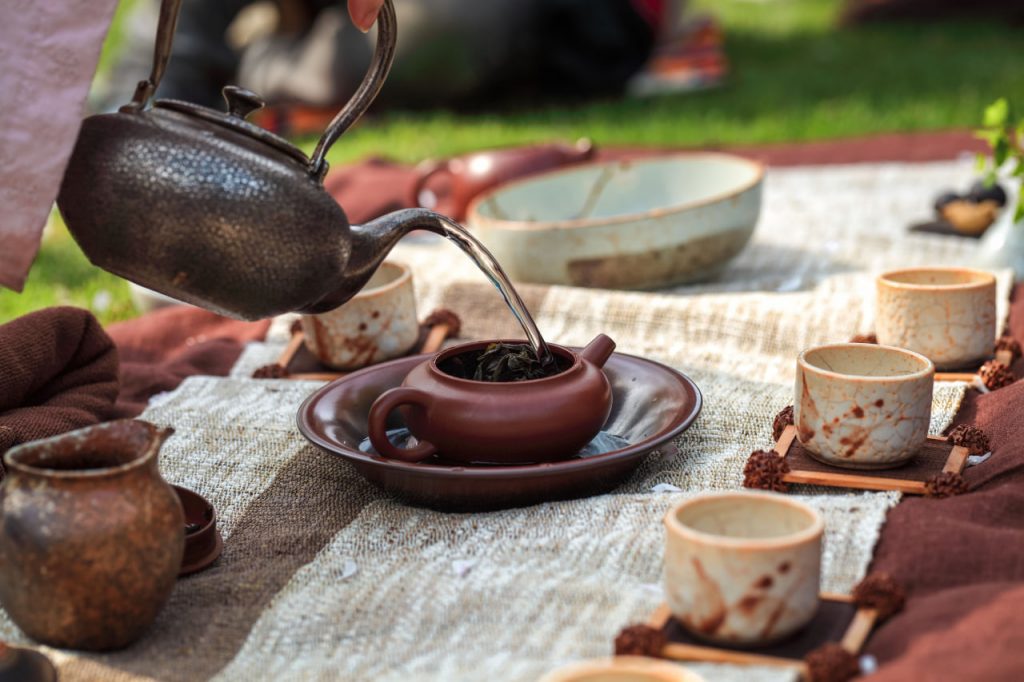Tea is more than just a beverage—it is a symbol of hospitality, mindfulness, and cultural identity across the world. From the refined Japanese tea ceremony to the vibrant tea markets of Morocco, each culture has developed its own traditions surrounding tea preparation and consumption. Exploring these customs offers a deeper appreciation for the art of tea drinking and the ways it connects people across generations and borders.
1. Japan: The Art of the Tea Ceremony (Chanoyu)
Japanese tea culture is deeply rooted in Zen Buddhism and emphasizes harmony, respect, purity, and tranquility. The traditional tea ceremony, known as chanoyu or sado, involves the careful preparation and presentation of matcha, a finely ground green tea. Every movement in the ceremony is performed with grace and intention, creating a meditative experience for both the host and guests. The utensils, tea room, and even seasonal decorations play a crucial role in setting the atmosphere.
2. China: The Birthplace of Tea
China is considered the birthplace of tea, with a history dating back over 4,000 years. Tea drinking in China varies by region, with different traditions for green, black, white, and oolong teas. One of the most well-known customs is the Gongfu tea ceremony, which focuses on precision and skill in brewing. Small clay teapots, multiple infusions, and carefully measured steeping times allow for the full expression of the tea’s aroma and flavor.
3. India: Chai – A Daily Ritual
In India, tea is an essential part of daily life, with chai (spiced tea) being the most popular preparation. Masala chai, a blend of black tea, milk, sugar, and warming spices like cardamom, cinnamon, and ginger, is served on bustling street corners by chaiwalas (tea vendors). India is also home to some of the world’s most famous tea-growing regions, including Darjeeling and Assam, which produce high-quality black teas enjoyed worldwide.
4. Morocco: The Art of Mint Tea
Moroccan tea culture revolves around Atay, a traditional mint tea made with green tea, fresh mint leaves, and generous amounts of sugar. This tea is served as a gesture of hospitality, often poured from a height to create a foamy top. The preparation and serving of tea in Morocco is an art form, and it is customary to drink three glasses, each with a slightly different flavor profile as the leaves continue to steep.
5. United Kingdom: The Elegance of Afternoon Tea
Introduced in the 19th century by Anna, the Duchess of Bedford, afternoon tea has become a beloved British tradition. Served with an assortment of finger sandwiches, scones with clotted cream, and delicate pastries, this ritual is a symbol of refinement and socializing. British tea culture is centered around black tea varieties, such as Earl Grey and English Breakfast, often served with milk and sugar.
6. Russia: The Tradition of the Samovar
In Russia, tea is typically brewed in a strong concentrate and diluted with hot water from a samovar, a traditional metal urn. Russian tea culture often includes the use of black teas, enjoyed with lemon, honey, or jam. Tea is a central part of social gatherings, and it is commonly served alongside sweet pastries and preserved fruits.
Conclusion
Tea traditions around the world reflect the diversity of cultures and their unique approaches to hospitality, mindfulness, and connection. Whether through a formal Japanese tea ceremony or a casual cup of Indian chai, tea continues to be a unifying force, bringing people together in moments of warmth and tradition. Exploring these customs allows us to appreciate not just the flavors of tea but also the stories and rituals that have shaped its journey through history.
